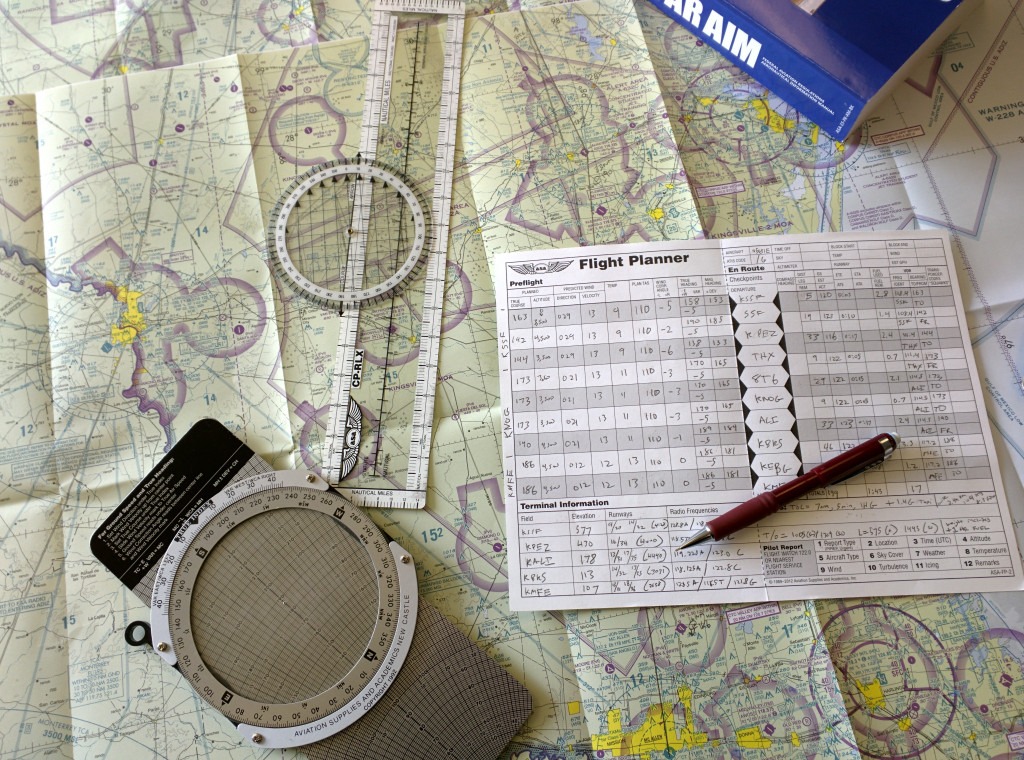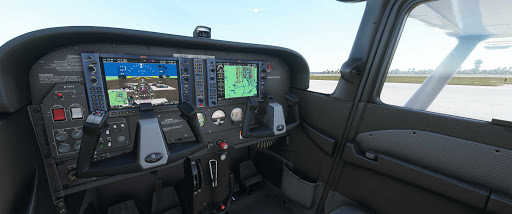Comparing Real-World Aviation Procedures to Flight Sim Techniques.
Introduction
Flight simulators have grown into sophisticated training tools, bridging the gap between virtual flight and real-world aviation. Real world aviation procedures to flight sim techniques are often utilized in simulators today. Simulators today are very capable of replicating complex procedures that mirror the actions taken in actual cockpits, making them invaluable for both recreational and professional pilots.
This blog post explores how various aviation procedures, including VFR (Visual Flight Rules), IFR (Instrument Flight Rules), emergency procedures, and instrument navigation, can be effectively practiced in flight sims like MSFS 2024, X-Plane 12, and DCS World.
1. VFR (Visual Flight Rules): Real-World Basics vs. Simulator Training

- Real-World VFR Essentials: Under VFR, pilots navigate by visually referencing landmarks, roads, and terrain features. Proper VFR flying relies on strong situational awareness and precise altitude control to stay clear of obstacles and controlled airspace.
- Flight Sim Techniques: In simulators, practicing VFR can be achieved by flying on a clear weather day, using sectional charts, and disabling any HUDs or aids. Programs like MSFS and X-Plane 12 simulate real-world scenery with high accuracy, allowing pilots to follow roads, rivers, and city layouts. Key Techniques for VFR in Sims:
- Practicing Lookout Techniques: Use head-tracking software or VR to develop spatial awareness and simulate clearing turns.
- Maintaining Altitude and Heading: Use visual landmarks to practice maintaining altitude and heading as in real-world training, resisting the use of autopilot.
- Real-World Comparison: While simulators can replicate terrain and landmarks, actual VFR flight includes dynamic visual clues like shadows, reflections, and subtle atmospheric changes. However, flight sims offer a solid foundation for developing visual navigation and situational awareness.
- Joystick / HOTAS – AMAZON.com
- Rudder Pedals – AMAZON.com
- Throttle Quadrant – AMAZON.com
- Gaming Chair – AMAZON.com
- VR Headset – AMAZON.com
2. IFR (Instrument Flight Rules): Real-World Procedures vs. Simulators

- IFR Fundamentals: IFR allows pilots to fly in low visibility by relying on instruments for navigation, altitude, and heading. In the real world, IFR is used for flying in clouds, low visibility, and under ATC guidance.
- Simulating IFR in Flight Sims: Most modern flight simulators provide accurate models for IFR training. Using features like ILS approaches, DME arcs, and instrument approaches can hone your instrument proficiency. IFR Practice Techniques:
- Instrument Proficiency: Practice flying without visual references by adjusting weather settings to foggy or night conditions. This forces reliance on instruments like the artificial horizon, altimeter, and heading indicator.
- Using ATC for IFR Procedures: MSFS has built-in ATC and plugins for X-Plane offer enhanced ATC that can simulate real IFR communications. Practicing with ATC provides a realistic flow of clearances and instructions.
- Real-World Comparison: Simulators offer near-identical instrumentation and controls, but lack the spatial disorientation that real IFR conditions can cause. However, IFR in sims is an invaluable way to reinforce scan patterns, navigation skills, and ATC communications.
3. Real World Aviation Procedures to Flight Sim Techniques – Emergency Procedures

- Real-World Emergency Protocols: Emergencies in real aviation require quick responses to a host of scenarios—engine failure, fire, or sudden weather changes. Pilots practice immediate response steps, troubleshooting, and prioritizing safety.
- Simulating Emergencies in Flight Sims: In flight simulators, you can replicate many emergencies. X-Plane, for example, allows you to simulate engine failures, fuel leaks, and control surface failures. Practical Emergency Training Tips:
- Engine-Out Practice: For general aviation, simulate engine failures during different phases of flight. Practice setting up for emergency landings, whether it’s finding a safe field or returning to the runway.
- Partial Panel Scenarios: In X-Plane and MSFS, you can set failures like gyro or airspeed indicator malfunctions, requiring you to rely on backup instruments or alternate navigation.
- Real-World Comparison: Real emergencies add stress and physiological factors like adrenaline, which a simulator can’t replicate. However, practicing procedures for immediate action and maintaining composure is an invaluable skill that simulators can strengthen.
4. Real World Aviation Procedures to Flight Sim Techniques – Instrument Navigation
- Real-World Instrument Navigation: Instrument navigation involves using VORs, NDBs, GPS, and DME to track courses, fly holds, and conduct approaches. This is a skill pilots master to handle complex airspace and ensure precise navigation without visual landmarks.
- Using Instrument Navigation in Simulators: With accurate VOR and GPS navigation, simulators like MSFS and X-Plane offer realistic setups to practice instrument navigation. Instrument Navigation Techniques:
- Flying VOR Holds: Most simulators allow for VOR tracking, letting pilots practice the proper entry and hold techniques. Set up realistic scenarios by following IFR charts and practicing entry procedures, timing, and turn coordination.
- GPS Approaches: Practice RNAV approaches to become familiar with GPS-based waypoints, LPV approaches, and the intricacies of WAAS-guided descents. MSFS, in particular, includes GPS navigation with realistic autopilot modes.
- Real-World Comparison: Simulator-based navigation training mirrors real-world navigation well, providing an excellent way to refine skills for accurate, instrument-guided flight. However, simulators lack environmental factors like equipment malfunctions or degraded signals that real pilots may encounter.
5. Real World Aviation Procedures to Flight Sim Techniques – Crosswind Landings and Ground Handling

- Real-World Crosswind Techniques: In actual aviation, crosswind landings involve specific techniques like crabbing and side-slipping to align with the runway. Ground handling is critical to prevent ground loops and maintain directional control.
- Practicing Crosswind Techniques in Simulators: With adjustable weather settings, simulators allow you to practice crosswind landings and ground handling with high fidelity. Simulator Techniques for Crosswind Handling:
- Side-Slip and Crab Methods: Adjust the wind settings to various crosswind intensities. Practice both the crab approach and the side-slip method to see how they affect your control surfaces.
- Rudder Sensitivity Adjustments: Increase the rudder sensitivity in sim settings to replicate the need for fine adjustments during a crosswind landing. Many real pilots practice crosswind landings in simulators to gain confidence.
- Real-World Comparison: Simulators offer realistic control response in crosswinds but don’t fully capture ground friction and turbulence experienced in actual landings. However, mastering visual techniques and rudder use is highly transferable.
6. Approach and Landing Procedures

- Real-World Precision Landings: In real life, pilots rely on VASI/PAPI lights and localizer approaches to ensure precise landings, often guided by ATC.
- Flight Sim Techniques for Approaches: MSFS and X-Plane offer realistic visuals for approach aids, along with functional ILS systems. Setting up scenarios with different weather conditions can help pilots practice landing approaches. Suggested Approach Techniques in Sims:
- ILS Practice: Fly ILS approaches under low visibility to practice precision landings. MSFS’s weather customization allows for fog and low visibility settings that replicate actual ILS conditions.
- Visual Approach Techniques: For non-instrument approaches, use VASI or PAPI lights for guidance. Practicing in VFR conditions can improve spatial awareness and control.
- Real-World Comparison: While simulators lack the physical feel of descent, they effectively replicate the visual and procedural aspects of approaches and landings, making them valuable for perfecting approach accuracy.
7. Communication Protocols and ATC Interactions

- Real-World ATC Dynamics: ATC communications require clear and concise exchanges, maintaining separation, and understanding terminology.
- Simulating ATC in Flight Sims: Many simulators include ATC features, with add-ons like PilotEdge or VATSIM providing real-world ATC simulations. Effective ATC Training in Sims:
- Phraseology Practice: Use real-world phraseology for all communications. Tools like VATSIM allow you to practice with live controllers, adding realism.
- Adhering to IFR Clearances: In simulators with realistic ATC add-ons, you can experience the structure of IFR communications. Follow altitude and heading instructions exactly as directed.
- Real-World Comparison: Simulators excel in providing practice for communication protocols, but the variety and tone of real-world ATC responses may differ. However, for practicing terminology and process, simulators are highly effective.

- Latest CPU’s Available Now – Amazon.com
- Get a NEW GPU Best Performance – AMAZON.com
- Upgrade RAM Here today – AMAZON.com
- Prebuilt PC Options – AMAZON.com
Conclusion
Comparing real-world aviation procedures to simulator techniques reveals just how far flight simulators have come. While real-world training introduces unique stressors and physical sensations, simulators provide an excellent environment to practice procedures, enhance navigation skills, and refine emergency responses.
Whether you’re using MSFS, X-Plane, or DCS World, the techniques and practice scenarios available in these simulators make them invaluable tools for aspiring pilots and enthusiasts alike. Embracing these tools for procedural training can bridge the gap between virtual and real-world piloting skills and enjoy your flying even more!
Author

Brendon McAliece (Aka Gunnie) is a military veteran with 23 years working on Jet Fighters, their weapons systems and ejection seat/module systems as well as munitions and R&D. Involved with flight simulation since the 1980s, he has flown all the major flight simulators over the years.
He is an Australian expat who has lived in Malaysia, UK, Saudi Arabia and more recently Thailand. He is a multi-lingual blogger who loves to share his life experiences here on LetsFlyVFR.com and DreamingGuitar.com, with his lifestyle and Travel experiences Blog plus his Dreaming Coffee website.
Learn More @
DreamingGuitar.com – DreamingCoffee.com – LetsFlyVFR.com
( HOME – BLOG – SHOP – ABOUT )
As an Amazon affiliate I may benefit from qualifying sales.








